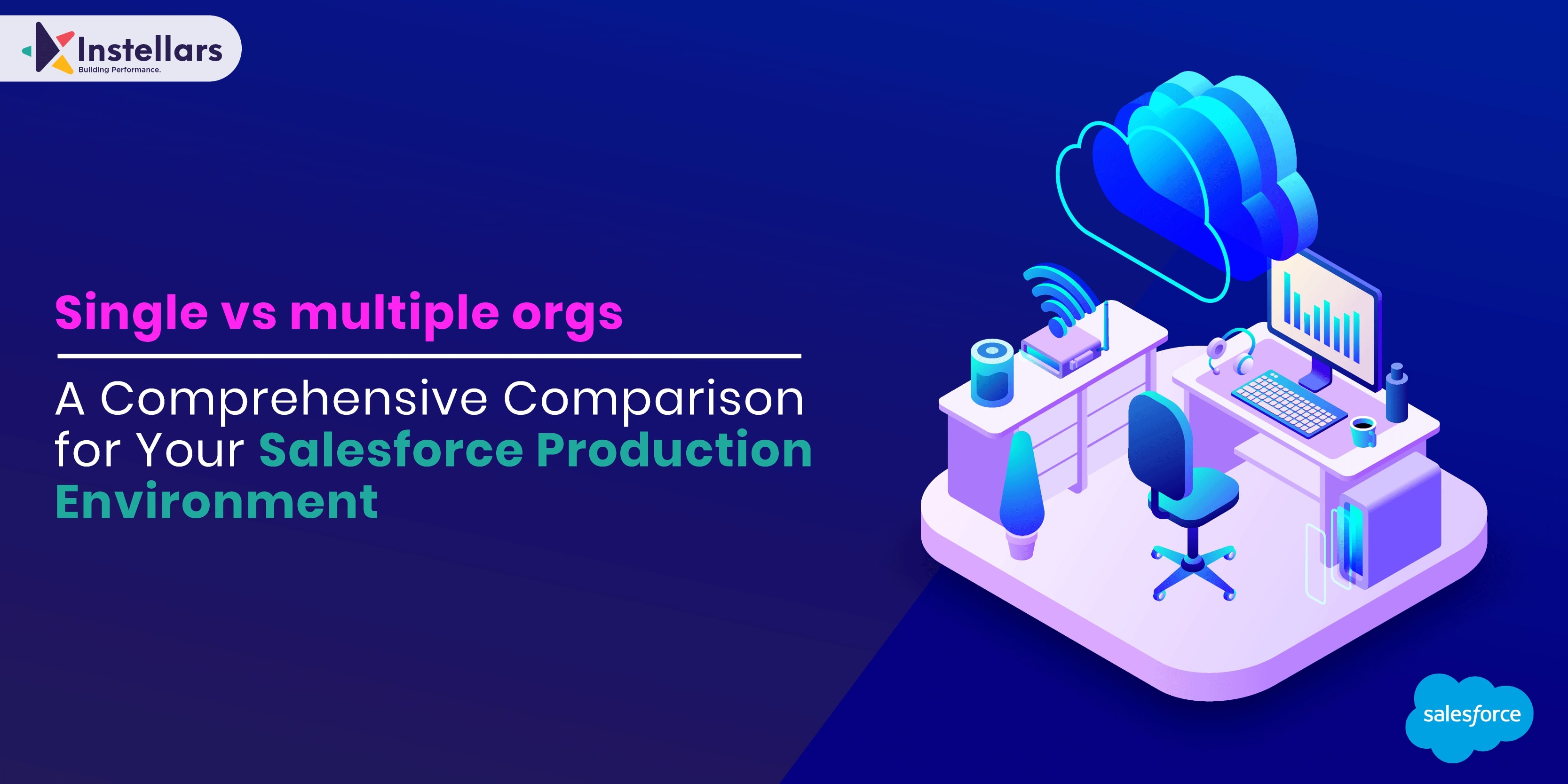
Single vs Multiple Orgs: A Comprehensive Comparison for Your Salesforce Production Environment

Single vs Multiple Orgs: A Comprehensive
Comparison for Your Salesforce Production Environment
When it comes to managing your Salesforce production environment, one crucial decision you need
to make is whether to have a single org or multiple orgs. This choice can have a significant impact on your system's scalability, security, and overall efficiency.
The
discussion of having a global instance or having separate instances per region
or business often pops ups when working for large global enterprises.
Let us
look at some of the key aspects which can help make such decisions:
Business Segmentation
If your organization has multiple business units or
divisions that operate independently and have distinct processes, data
requirements, or security needs, it may be beneficial to have separate
Salesforce orgs for each unit. This allows for better customization and control
over the org's configuration to meet specific business requirements.
Regional or International Operations
If your company operates in different regions or
countries with varying regulatory requirements, language preferences, or
localized processes, setting up separate Salesforce orgs for each region can
provide better flexibility and compliance. It enables you to tailor the orgs to
meet local needs while still maintaining some global consistency through shared
data or integrations.
Mergers and Acquisitions
When organizations merge or acquire other companies, it's common to have
separate Salesforce instances for each entity initially. This allows for easier
integration and consolidation of data, processes, and systems at a later stage.
Having multiple orgs helps keep the data and configurations of each entity
separate until the consolidation efforts are complete.
Development and Testing Environments
It's standard practice to have separate orgs for development, testing, and production
environments. This ensures that changes and enhancements can be thoroughly
tested in a controlled environment before being deployed to the production org.
Maintaining separate orgs for these purposes helps maintain stability and
minimizes the risk of disrupting critical business operations.
Scalability and Performance
If your organization is rapidly growing or has high transaction volumes, having
multiple orgs can help distribute the load and improve system performance.
Splitting the workload across multiple orgs can prevent performance degradation
and provide a more seamless user experience.
Restrictions on data residency
If there are strict restrictions that one
region/business data cannot be hosted in other regions
Ultimately, the decision to use multiple Salesforce
orgs for production depends on the specific needs, complexity, and structure of
your organization. It is recommended to thoroughly analyze the requirements,
consider the benefits and trade-offs, and consult with Salesforce experts or
architects to determine the most suitable approach.
When
designing a multi-org production environment in Salesforce, several
architectural considerations should be considered. Here are some key
considerations:
Data Integration and Sharing
Determine how data will be integrated and shared across the orgs. Evaluate
whether you need real-time or batch data synchronization, and consider using
Salesforce's integration tools like Salesforce Connect, Data Loader, or APIs to
establish data connections. Define data-sharing rules, and security settings,
and establish a data governance framework to ensure data consistency and
security across orgs.
User Experience and Single Sign-On (SSO)
Aim for a seamless user experience across multiple orgs. Consider implementing
Single Sign-On (SSO) solutions like Salesforce Identity, SAML, or OAuth to
enable users to access different orgs with a single set of credentials. Use
Salesforce's Lightning Experience or Community Cloud to provide a unified
interface for users, allowing them to navigate between orgs effortlessly.
Application and Code Management
Determine how applications, customizations, and code will be managed across
multiple orgs. Consider adopting a version control system, such as Salesforce
DX, to manage the development and deployment of code changes across orgs.
Implement a release management process to ensure controlled and coordinated
deployments across the different environments.
Security and Access Control
Establish a robust security model to ensure appropriate access control across
orgs. Define roles, profiles, and permission sets consistently across orgs.
Consider using Salesforce Shield or other security features to enhance data
protection and compliance. Implement multi-factor authentication (MFA) and
regular security audits to mitigate security risks.
Reporting and Analytics
Determine how reporting and analytics will be handled in a multi-org
environment. Evaluate whether you need centralized reporting or if each org
will have its reporting capabilities. Consider using Salesforce's Reporting and
Analytics tools, such as Einstein Analytics, to consolidate data from multiple
orgs for unified reporting and insights.
Change Management and Governance
Establish change management processes and governance frameworks to ensure
consistency, control, and coordination across multiple orgs. Define standards,
naming conventions, and development guidelines to maintain a coherent
architecture. Implement change control boards and release cycles to manage
changes effectively across orgs.
Disaster Recovery and High Availability
Consider the disaster recovery and high availability requirements for your
multi-org environment. Implement backup and recovery strategies for each org,
including regular data backups and redundancy measures. Evaluate options like
Salesforce's Data Recovery Service or utilizing external backup solutions to
ensure business continuity.
Scalability and Performance
Architect the environment for scalability and optimal performance. Consider
factors such as org partitioning, resource allocation, and load balancing to
distribute the workload across orgs and avoid performance bottlenecks. Optimize
data models, queries, and system configurations to ensure efficient performance
in each org.
These
considerations should be tailored to your organization's specific requirements
and constraints. It is recommended to involve Salesforce architects or
consultants to assist in designing and implementing the architecture for a
multi-org production environment.
For
expert assistance in designing and implementing a multi-org production
environment for Salesforce, Reach out to our Salesforce consultants at
Instellars.
Salesforce Practice Head
The transformation that matters
Send your resume to Careers @ Instellars
